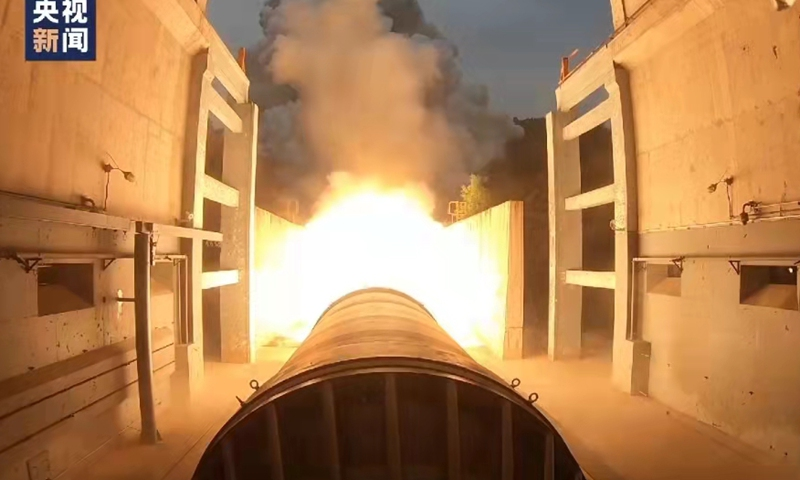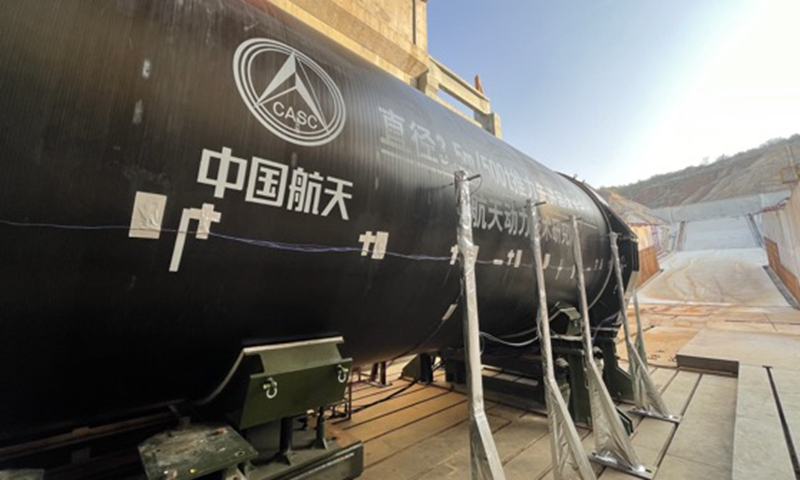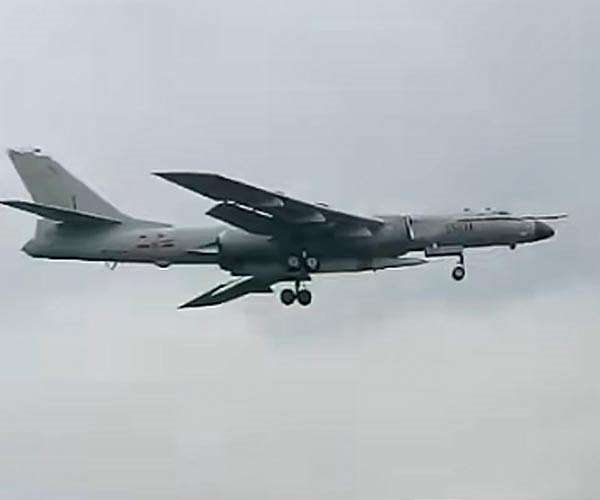TX035 中国で行われた2つの防衛装備品実験レポート
中国という国は、元来サイエンスというアカデミックなフィールドではなく、テクノロジー(応用技術力)の開発に特化してきています。その開発ポリシーの結果、下記の2つの実験成果報告からもわかるように、軍事関連技術開発のトップランナーになりつつありますね。(個人的には、中国の研究開発成果がノーベル賞の対象になりにくいのは、このポリシーの背景があるのかなーと感じていますが、軍事力という面では、多大な貢献度があるようですね。)
10月20日発表:
中国は、国産の固体ロケットエンジンの試験を行い、推力が500トンを超えました。この実験は、中国北西部の陝西省の省都である西安で行われ、この分野での世界記録を樹立しました。今回の実験成功は、中国の固体キャリアロケット技術が大きく進歩したことを示すものであり、大型重量輸送ロケット技術の開発の基礎となるものです。
China successfully tests 500-ton solid rocket engine
To meet demand for manned moon landings, deep space missions: developers

Closely following the heart-stopping and spectacular launch of the Shenzhou-13 manned spacecraft on Saturday, China has made another breakthrough in its aerospace technology, as researchers at the Academy of Aerospace Solid Propulsion Technology (AASPT) announced on Tuesday they conducted a successful running test of a domestically developed solid rocket engine, with a thrust of more than 500 tons, in Xi’an, capital of Northwest China’s Shaanxi Province, setting a world record in the field,
The Global Times learned from the AASPT, which is affiliated with state-owned aerospace giant China Aerospace Science and Technology Corp (CASC), that the 3.5-meter-diameter solid engine’s fuel load reached 150 tons.The successful test signals significant progress in China’s solid carrier rocket technology and lays the foundation for the development of large-scale, heavy-lift launch vehicle technology.
The development of the 500-ton thrust solid engine has entered the engineering application stage, while the landmark test opened up a key technology link for the development of China’s 1,000-ton solid thrust engine, the academy said in a statement sent to the Global Times.

The research and development of rocket engine technology has led the development of launch vehicles, with several steps along the way.
In 2009, China developed a 2-meter-diameter, 120-ton-thrust solid engine, a record at that time, which directly pushed forward the development of the country’s first solid carrier rocket, the Long March-11.
In 2016, by successfully linking 120-ton thrust engines, the country’s first bundled solid booster launch vehicle – the Long March-6A – won state approval for development.
In 2019, the roll-out of a 2.6-meter-diameter, 200-ton-thrust solid engine drove the project approval of the development of the Smart Dragon-3 (SD-3) commercial carrier rocket.As the latest member of the CALT Smart Dragon commercial rocket family, the SD-3 gained project approval on December 31, 2020, and China will launch the new make through a seaborne platform in the first half of 2022, Jiang Jie, a CALT rocket expert, told the Global Times.
According to CALT, the 2.64-meter-diameter SD-3 with a 3.35-meter-diameter nose cone is the largest and strongest in the Smart Dragon rocket series. It is capable of sending a payload of 1.5 tons into 500-kilometer sun-synchronous orbit.
Jiang, who is also an academician of the Chinese Academy of Sciences, revealed that the SD-3 aims to meet the market need for launches of large-scale commercial satellite constellations, as it is capable of sending as many as 20 satellites in one go.
The SD-3 would reduce the unit cost of payloads to $10,000 per kilogram, said CALT, highlighting the model’s strong market competitiveness.
Researchers with the academy told the Global Times on Tuesday that they believe the new 500-ton thrust engine offers more options for large and heavy-lift carrier rockets.
Observers said that the running test of the powerful solid engine set a new high in the field, lifting China’s large-scale solid rocket engine technology to world-leading levels, and will provide China’s new solid carrier rockets with more powerful and cost-effective advanced power. It will also significantly enhance the competitiveness of solid rockets in the commercial space launch market.
Based on the single 500-ton-thrust solid engine, the academy has set out to research a 3.5-meter-diameter five-stage engine, which would provide a total thrust of more than 1,000 tons, which is expected to be applied in the boosters of large and heavy-lift engines.
Such new technology would meet the demand of China’s space program such as manned moon landings and deep space exploration, the academy revealed.
China may boost accuracy of its hypersonic weapons via AI technology
Moscow (Sputnik) Oct 19, 2021
サウスチャイナ・モーニング・ポスト紙によると、中国PLAの研究者たちは、人工知能(AI)を利用して同国の極超音速輸送システムの精度を向上させようとしているという。

Description automatically generated with low confidence
中国外務省の趙麗健報道官は、8月に極超音速ミサイルの発射実験を行ったとする英フィナンシャル・タイムズ紙の報道に反論しました。第一に、それはミサイルではなく宇宙船であり、第二に、実験は7月に行われたと趙氏は明言しました。
しかし、今回の発言は、中国の極超音速ミサイル研究がフルスロットルで行われていないことを意味するものではないとも付け加えています。10月14日、中国の主要な研究プロジェクトを調査しているサウスチャイナ・モーニング・ポスト紙の北京駐在上級記者スティーブン・チェンは、人民解放軍の科学者たちが人工知能(AI)を使って極超音速兵器の精度を高めようとしていると報じています。
陳は、ロケット軍工学大学戦争支援学部のXian YongとLi Bangjieの研究論文を引用して、兵器にさらなるAIによる意思決定権を与えることを提案しています。これにより、兵器の全体的な位置精度が「1〜2桁」向上するとされています。極超音速輸送機は、飛行中に複雑な操縦をしながら、数千マイルもの距離を移動して荷物を運ばなければならないことを考えると、いかに正確に位置を決定(把握)できるかが重要になります。
しかし、兵器に内蔵されている慣性センサーは、組み立て時、輸送時、定期的なメンテナンスの際に、かなり物理的な妨害を受けるのが一般的であると、XianとLiは主張しています。さらに、極超音速兵器の電源をオンにすると、工場出荷時の設定値がずらされてしまうことがあり、その結果、精度に影響が出る可能性があるともほうこくしています。
この問題を解決するために、XianとLiのチームは、工場出荷時の設定をAI技術に置き換えることを提案した。AIは、兵器が発射された時点で動作を開始し、兵器のソフトウェアを「その場で」書き込んでいきます。AIは、GPSやBeiDou衛星からの信号を使ってミサイルの位置を計算し、搭載されているセンサーの結果と比較します。このデータをもとに、AIは兵器の飛行制御プログラム用に独自の測位アルゴリズムを作成します。
SCMPの記者は、中国の極超音速軍事プログラムで使用されているプロセッサの速度は機密扱いだが、その性能は着実に向上していると言われていると述べています。
数年前、中国のメディアは人工知能(AI)機能を備えた巡航ミサイルの開発についても取り上げていました。2016年9月21日、ザ・ディプロマットはこれらの報道を検証し、中国の情報源からは自律技術の具体的な性質についての成果報告は得られないと論じています。当時、ディプロマットは巡航ミサイルへのAI技術の使用に懐疑的な見方を示していましたが、現在AIは「新時代の海軍兵器、特に極超音速ミサイルの開発には不可欠と考えられている」と認めています。
2020年、ワシントンに拠点を置くブルッキングス研究所は、中国PLAにおける「ロボット、群体、その他の人工知能(AI)や機械学習(ML)の応用への大幅な投資」を強調するレビューを発表しました。同報告書は、中国人民軍の公式辞書には、2011年の時点で「AI兵器」の定義が含まれていたと指摘しています。
しかし、中国の軍事用AIプログラムは依然として極秘であるため、報告書の著者は「AI/ML対応の自律型兵器システムの開発と潜在的な採用におけるPLAの軌跡は依然として不確かである」とし、「これらの能力の成熟度は…現時点では高い自信を持って評価できない」と認めています。
Best regards,
Shoichi Sugiyama, Ph.D.


